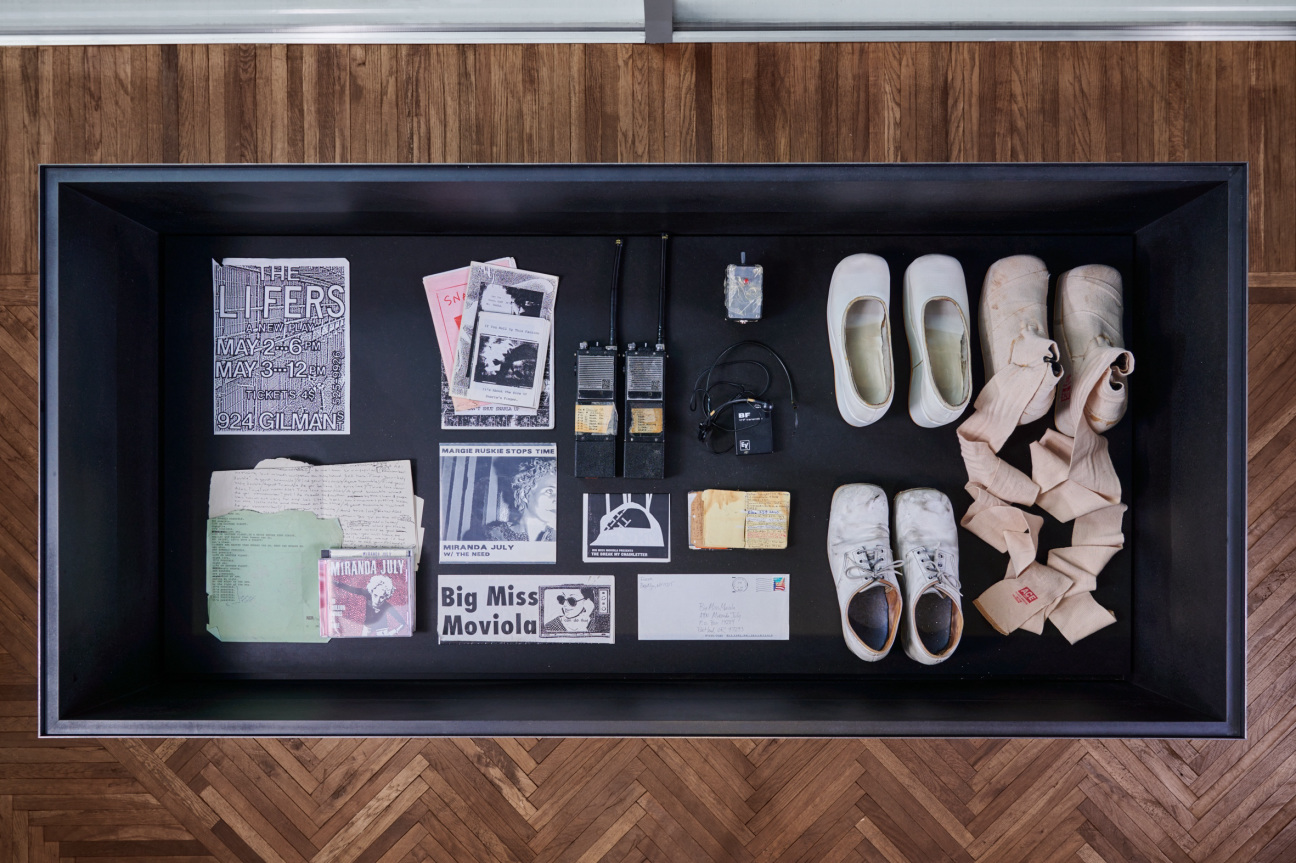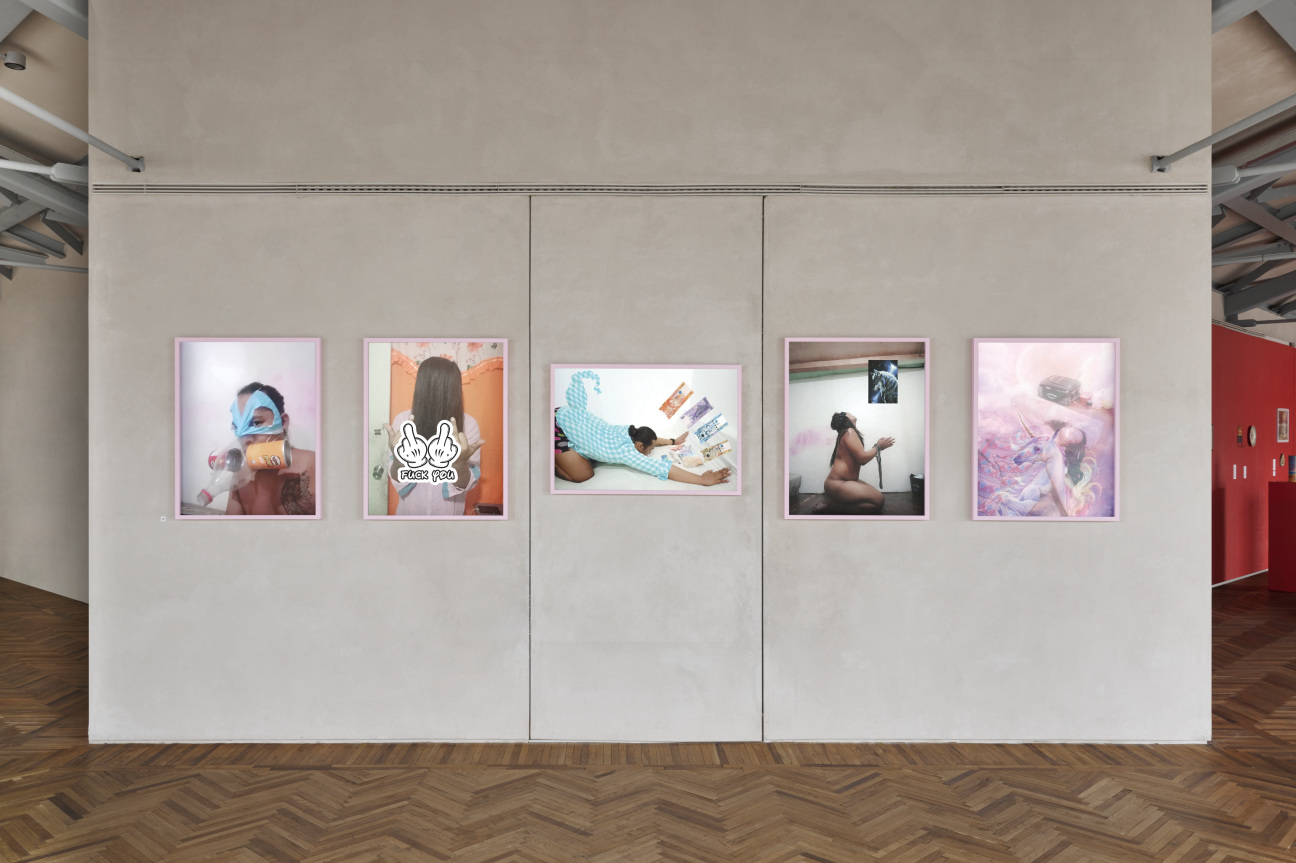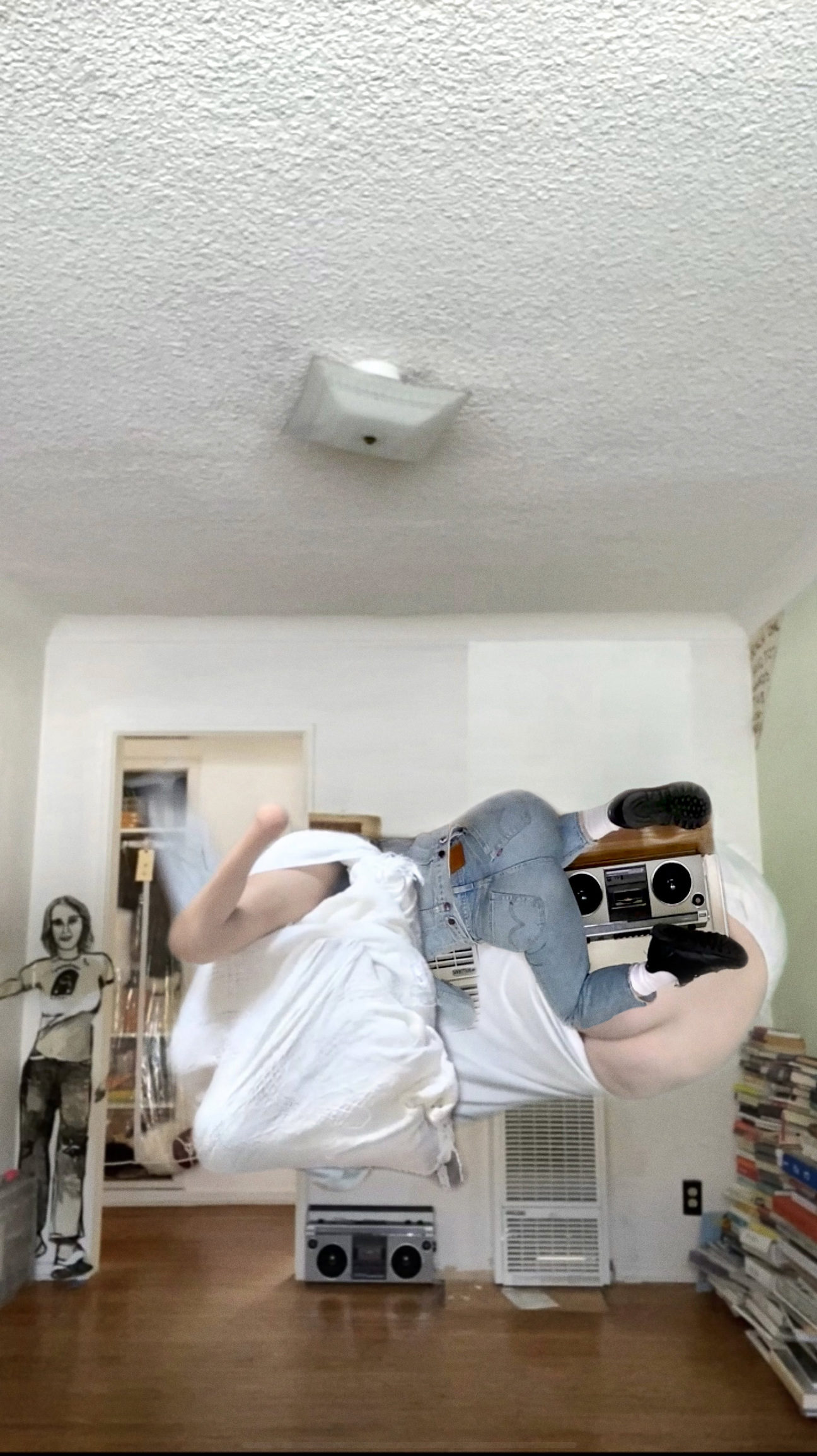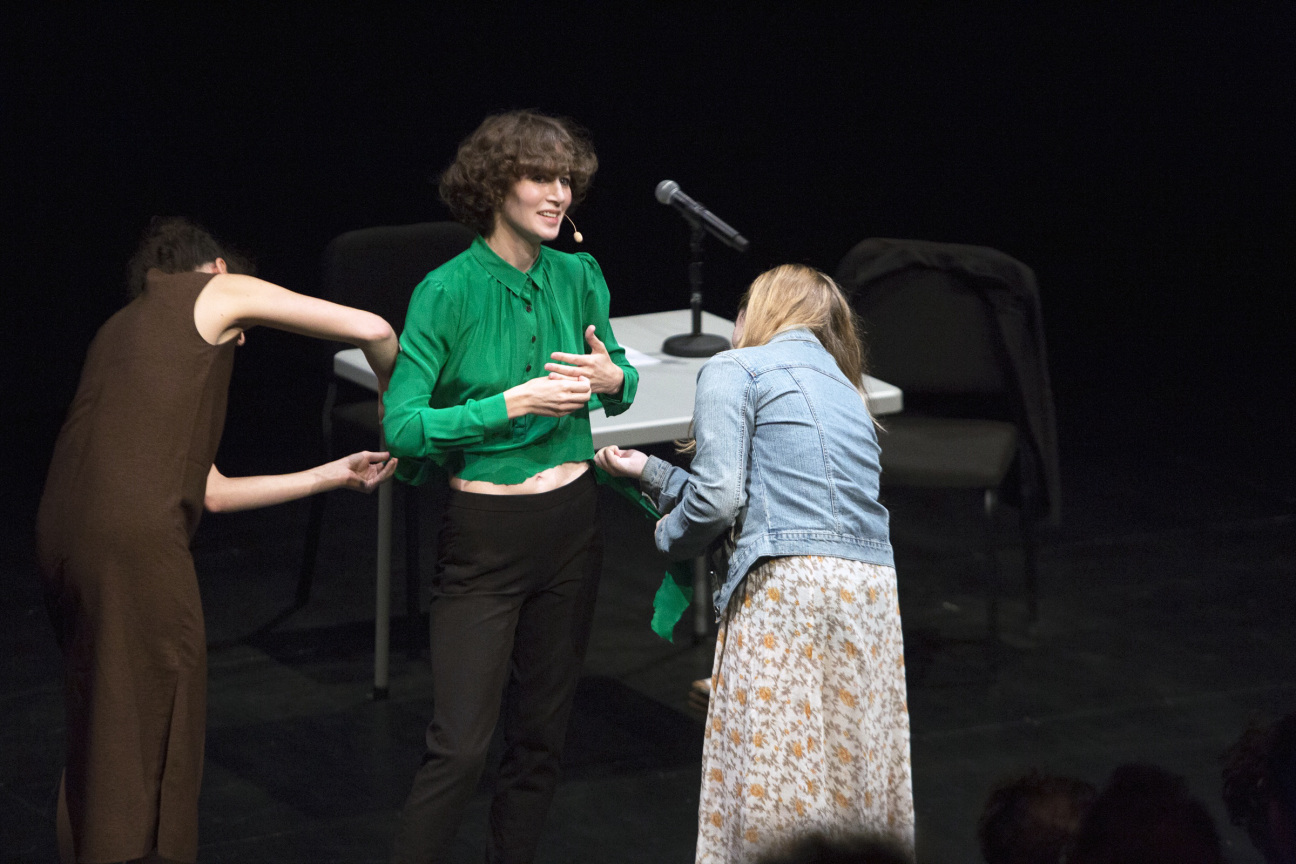
Miranda July wants us all to be more vulnerable, and she’s not afraid to go first.
In her first solo museum exhibition, “Miranda July: New Society,” organized by former Whitney and MoMA PS1 curator Mia Locks at the Osservatorio Fondazione Prada, Milan, we watch the artist shape-shift across works dating from 1997 to 2024. “The first floor of the exhibition focuses on July as a performer, the second on her as a collaborator,” Locks explains. “These are not mutually exclusive modes, of course, but they are key tension points within which July destabilizes the relationships between artist, audience, and artwork.”
Upon entering the Fondazione’s halls, Locks acclimates the viewer to July’s world through video clips of past performances punctuated by vitrines containing related ephemera and props. The show is not a retrospective. Instead, the early works displayed on the first floor set a precedent—introducing viewers to July’s mind and preparing them for the upstairs galleries, where the artist expands into installation, conceptual video, and sculpture.

The earliest piece in the exhibition, from 1997, plays on a freestanding monitor closest to the entrance. The 23-year-old artist stands alone on a modest stage, her audience—fellow youths at an all-ages punk club—is not the gallery-going crowd, and she faces them without armor. She dares to bend a room full of nihilistic punks to her will, not by moshing or screaming into the mic, but by throwing a lifeline to the crowd in an attempt to forge an impromptu emotional connection.
As the show unfolds, July digs her heels deeper into this stance of radical vulnerability. In the video projections, we watch her move closer to her audience, eventually making them accountable for making the work itself. Reflecting on her ongoing motivation, July muses, “Why would you want to be here? One reason might be that it’s hard to connect if you’re not.” You might not be seeking intimacy in the Fondazione’s bathrooms, but in true July fashion, you’ll be confronted with it anyway—the sound of July’s voice, part of a call-and-response piece entitled The Crowd, is piped into the stalls at full volume. If her relentless earnestness makes you squirm, it’s because it is impossible to escape.

“I see myself doing the same thing in my 20s that I am doing now,” July tells me as we walk through the show on the eve of the opening. “I’m asking the crowd to step out of bounds to find out if they’re really there.” She doesn’t position the works on view as “performance art” or see herself as paying homage to the art historical canon. For July, art-making has always been a radical social experiment. “When I would get heckled in those early punk shows, I thought, I’ll make myself more vulnerable,” July recalls. “Vulnerability is not a safe move. It inspires anger and revulsion. But the second you remember you can do it, you’re set free.”
Examining any one of the works in the show in a vacuum might lead to the conclusion that July is the quintessential “kooky” artist—doe-eyed, sincere to the point of mysticality, tending to pose more questions than she answers. Don’t be fooled: her oeuvre is designed to remind us, as she put it, “how narrow our image of power can be.” July is always the master, despite—or perhaps because of—the fact that she’s willing to play the puppet too.
On the second floor of the exhibition, we see the audience-performer dynamic established in July’s early work evolve to embrace the messiness of collaboration in all its forms. In Learning to Love You More (2002-09), July and fellow artist Harrell Fletcher created a website inviting strangers to submit their responses to a series of creative prompts. They are simple ideas—“Make an exhibition of the art in your parents’ house,” for example—and reminiscent of FLUXUS works by artists like Alison Knowles and Yoko Ono. July is interested in testing the limits of authorship, creating a space for anyone—not only artists and culture workers—to exercise radical intimacy and self-expression.

Throughout the show, July harnesses the Internet and social media platforms repeatedly, as if they were her own proprietary tools, to explore subjects like the queering of the female form, experiments with movement, and direct and open communication with anonymous collaborators all over the world. “Technology is still human-made,” she reminds her audience. One of the newest works in the show, F.A.M.I.L.Y (Falling Apart, Meanwhile, I Love You), features recordings from strangers who answered prompts July posted on a private Instagram account beginning in 2020.
She asked them to film themselves moving through their personal spaces in a way that left room for the artist’s imagined body. July made movement videos in response, like playing a game of virtual contact improv. “I tried to create an image that gave us perhaps what we had wanted from social media technology in the first place—we wanted to be looked at so lovingly that we felt okay,” July says. The resulting videos are a phantasmagoric collage of mundane domestic interiors, July’s semi-naked body, and the image of her virtual self melting into that of a stranger in virtual space. The goal? “This perfectly, imperfect togetherness.”
Like so many feminist artists before her—Janine Antoni, Hannah Wilke, and Sophie Calle, to name a few—July coopts the male gaze, placing her sexualized form front and center in her work while simultaneously exploring what happens when she treats her physicality as just another material. “I’m a woman, so my body is the main thing about me,” she says. “But at the same time, my body doesn’t have to be an overly determined space—it can be a dumb animal that doesn’t need to think or verbalize its feelings.”

The show's title is taken from one of July’s 2015 performances: New Society. Standing on stage, July asks the audience to join her in the formation of a new society. Audience members fabricate a flag, write an anthem, and draw up a constitution. They have come to see Miranda July perform, but she pushes them to do so instead. This is a formula the artist has built her career interrogating. “I have the power on stage and everyone is looking at me, but I'm vulnerable because I am taking a risk up there,” she declares.
At one point during New Society, July actually leaves the theater, appointing an audience member in her stead and letting her work take on a life of its own. “I’m not in charge anymore,” she says, before quickly reminding the crowd, “But I am the one who started it.” July’s world is a thinly constructed one, with no elaborate sets or props to rely on. That is the power of July’s work: It only exists if we all agree to play along.
"New Society" is on view through October 14, 2024 at the Fondazione Prada's Milan Osservatorio.










 in your life?
in your life?

